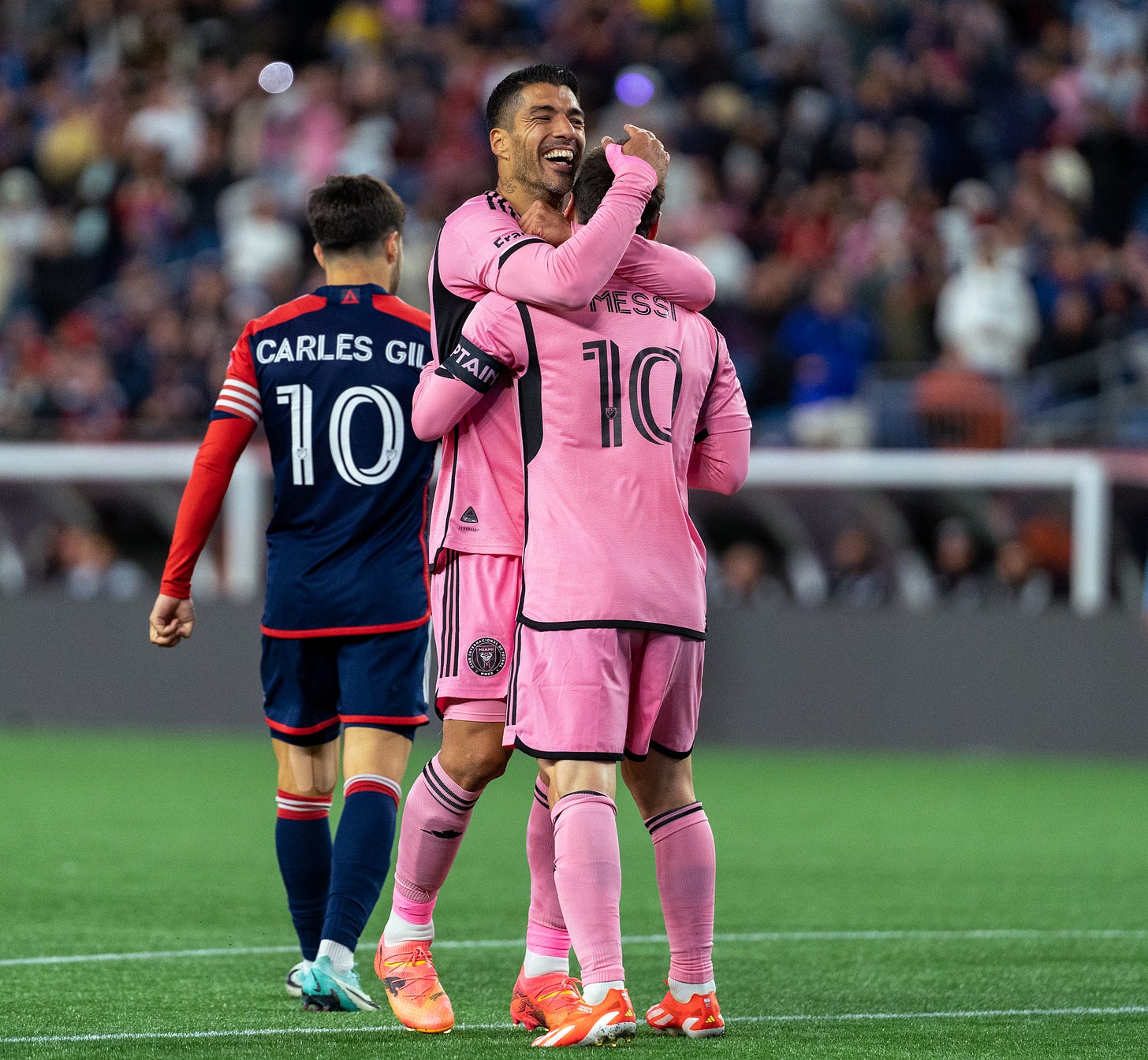How Do MLS's Best Clubs Spend Their Salary Cap?
Digging in on Roster Construction Technique
And just like that the offseason is nearly over.
It feels like just yesterday that the Revolution were declining (pretty much) every player-option they had on the books and banishing whosoever remained to Silicon Valley. New England cut, traded, declined, or otherwise gave the ol’ heave-ho to 18 players from their 2024 roster - well over half of the team.
Indeed, that sound you’ve been hearing all winter was Caleb Porter hammering at the Revolution’s support beams and Curt Onalfo knocking down their walls (perhaps without checking for studs). To their credit, they have also been busy importing replacement parts all offseason. Some of the more foundational sort, others perhaps more akin to window dressing. All pieces that Porter and Onalfo hope will hold together better than last year and certainly better than this analogy.
It’s a full rebuild, folks.
I haven’t bothered to fact check this, but I suspect that New England will be the 2nd most different team (year-over-year) of any in MLS. They narrowly lose out on the top spot to San Diego, who didn’t field a team at all last season, as they embark on their inaugural MLS campaign in 2025. Even still, I’d be willing to bet the Revs’ 32 roster transactions tops even San Diego’s transaction totals seeing as rosters are capped at 30 players.
All of that flux has brought into sharp relief the confines and strictures of building a roster under MLS’s complicated salary cap guidelines. It’s hard to piece together a contender and oftentimes it takes several successful transfer windows to reach the ultimate goal. hoisting a league trophy.
With the Revs speed-running an expansion season in their 30th year, I’ve been thinking a lot about how successful teams spend their money. How do they allocate their funds across positions? Is it more important to spend big, or better to achieve high value? How do the best teams in MLS spread the wealth as compared to the rest of the league?
Goals and methodology
The primary goal of my research was A) determine how much you would expect to pay (on average) for starting caliber players at each position, and B) how trophy-winning teams do so compared to the rest of the league.
I pulled data from a combination of sources but the primary source is the MLSPA’s salary guidelines. I gathered salary, positional, and playing time data on every player on a trophy-winning MLS club over the past 3 seasons.
Those clubs included:
2024 MLS Cup: LA Galaxy
2024 Shield: Inter Miami
2023 MLS Cup: Columbus Crew
2023 Shield: FC Cincinnati
2022 MLS Cup/Shield: LAFC
By way of caveat, positions were determined by their listing with the MLS Players Association. Some players, for example, may have played primarily as a winger last season but were listed by the MLSPA as an outside back, their salary and stats will count for the defense. Players who played for an MLS team but who were traded or cut mid-year (removing them from the salary database) were added back in at a prorated salary based on when they left MLS.
It’s also worth noting that I took the liberty of simplifying things, in order to decrease the overall number of positions. I selected the following positions as a broad archetype: GK, LB, RB, CB, DM, CM, AM, RW, LW, and CF. I sorted anyone who wasn’t already labeled as such into the closest match, in order to avoid having smaller subgroups that weren’t representative on their own.
Center backs weren’t differentiated by left/right in MLSPAs data, and as such they’re combined here.
Finally, the numbers below are based on salary figures only, and don’t necessarily tell the whole picture in terms of the salary cap. Transfer fees aren’t included, and typically those are amortized over the length of the contract and deducted from the salary cap. Furthermore, U22 signings hit the salary cap at just $200K regardless of salary/transfer fees. Those in combination probably mean we should take this data more for the trends than for actual cap estimations.
With all that out of the way, let’s look at some numbers.
Keep reading with a 7-day free trial
Subscribe to The Blazing Musket to keep reading this post and get 7 days of free access to the full post archives.





